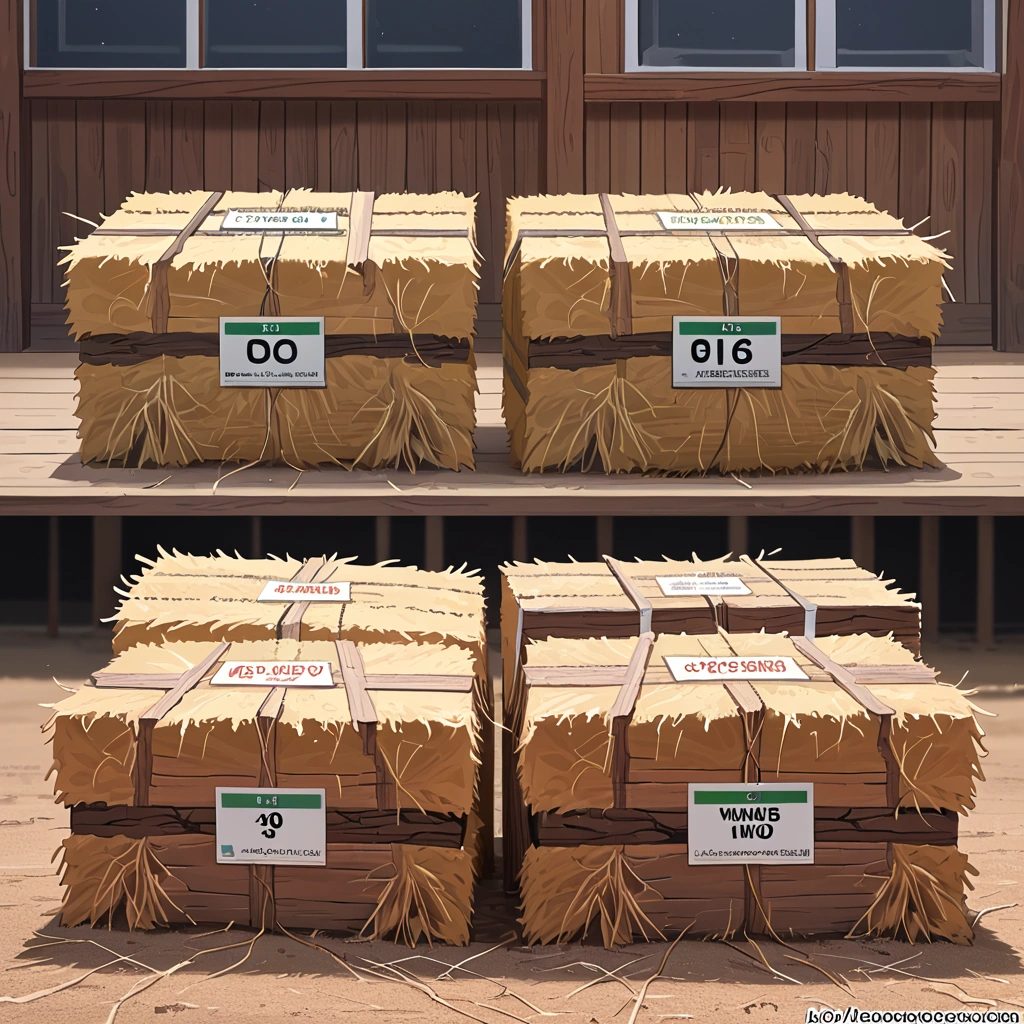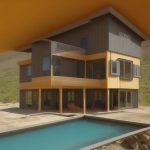Building Naturally: A Comprehensive Guide to Straw Bale, Cob, Rammed Earth, Timber Frame, and Hempcrete
The Rise of Natural Building: A Comprehensive Guide
In an era defined by escalating climate concerns and a profound shift towards environmental consciousness, the allure of natural building materials is undeniable. From the inviting warmth of straw bale homes, reminiscent of pastoral landscapes, to the sculptural elegance of cob structures, these materials present a compelling departure from conventional construction’s reliance on concrete, steel, and synthetic compounds. This resurgence isn’t merely a nostalgic return to simpler times; it’s a pragmatic response to the urgent need for sustainable construction practices that minimize environmental impact and promote healthier living environments.
The embodied energy in conventional building materials, the carbon emissions from their production, and the potential toxicity of some synthetic components are all driving forces behind the growing interest in natural alternatives. But navigating the world of natural building materials requires informed decision-making. Which material best aligns with your project’s specific needs, budget, and environmental goals? This guide offers a detailed building materials comparison, focusing on five prominent options: straw bale, cob, rammed earth, timber frame, and hempcrete.
We delve into their respective strengths and weaknesses, examining crucial factors such as durability, insulation performance (R-value), cost-effectiveness, environmental footprint, and suitability for DIY construction. Understanding these nuances is paramount for achieving successful and sustainable building outcomes. The selection process involves considering factors like local climate, material availability, desired aesthetic, and the level of DIY involvement desired. Our aim is to empower homeowners, builders, and anyone intrigued by sustainable living with the knowledge necessary to make judicious choices about their building endeavors. By providing a comprehensive overview of these natural building materials, we hope to demystify the process and encourage wider adoption of green building practices. This includes addressing common misconceptions surrounding natural building, such as concerns about durability or pest resistance, and highlighting the innovative techniques that ensure long-lasting and resilient structures. Ultimately, embracing natural building materials is an investment in a healthier planet and a more sustainable future for generations to come.
Material Breakdown: Strengths and Weaknesses
Each natural building material presents a unique profile of strengths and weaknesses, demanding careful consideration during the design phase. Straw bale construction, known for its exceptional insulation (R-value of R-30 to R-40 when properly compressed), utilizes tightly packed bales of straw as infill within a structural frame, offering a cost-effective path to energy efficiency. However, straw’s inherent vulnerability to moisture necessitates meticulous detailing, including ample roof overhangs and breathable wall assemblies, to prevent rot and mold.
Consider the example of the Last Straw House in Arizona, which demonstrates the longevity of straw bale construction in arid climates with appropriate design. Cob, a malleable mixture of clay, sand, and straw, allows for organic, sculptural forms, fostering a sense of artistic expression in home design. Its significant thermal mass effectively regulates internal temperatures, reducing the need for active heating and cooling systems. However, with a lower R-value (around R-2 per inch) compared to straw bale, cob structures in colder climates require thicker walls to achieve comparable insulation levels.
Architect Elke Cole’s work showcases the beauty and functionality of cob buildings, emphasizing the importance of understanding local clay composition for optimal performance. Rammed earth, created by compacting earth within forms, offers exceptional durability and inherent fire resistance, making it a robust choice for natural building. While its thermal mass contributes to temperature stability, its limited insulation properties (around R-1 per inch) often necessitate supplemental insulation, especially in extreme climates. The labor-intensive nature of rammed earth construction can also impact project costs.
Contrastingly, timber frame construction employs heavy timbers joined to create a structural skeleton, offering inherent strength and aesthetic appeal. The spaces between timbers are typically filled with insulation, providing flexibility in achieving desired R-values. However, the cost of high-quality timber and skilled labor can be a significant factor. Hempcrete, a bio-composite material made from hemp hurds (the woody core of the hemp plant), lime, and water, stands out for its breathability, fire resistance, and good insulation (R-value of R-2 to R-3 per inch).
Its ability to regulate moisture and sequester carbon makes it a compelling choice for sustainable construction. As a relatively new material in the building industry, hempcrete faces challenges related to code acceptance and the availability of experienced contractors in some regions. Despite these hurdles, projects like the Margent Farm in the UK demonstrate the potential of hempcrete for creating healthy and environmentally friendly buildings. A detailed building materials comparison is provided below:
| Material | Durability | R-Value (approx.) | Upfront Cost | Long-Term Cost | Environmental Impact | DIY Suitability | Climate Suitability |
|—————–|———————-|——————–|—————|—————-|———————–|—————–|——————————————————|
| Straw Bale | Moderate (if protected) | R-30 to R-40 | Low | Moderate | High (renewable) | High | Dry climates; requires protection from moisture |
| Cob | High | R-2 per inch | Low | Low | High (earth-based) | High | Varied; benefits from overhangs in wet climates |
| Rammed Earth | Very High | R-1 per inch | Moderate | Low | Moderate (earth-based) | Moderate | Arid and temperate climates |
| Timber Frame | High | Varies (insulation) | High | Moderate | Moderate (wood source) | Moderate | Varied; adaptable to different climates with insulation |
| Hempcrete | High | R-2 to R-3 per inch | Moderate | Low | Very High (carbon sink) | Moderate | Temperate climates; good moisture regulation |
Cost Analysis and Environmental Footprint
The upfront and long-term costs associated with natural building materials vary significantly, making a detailed cost analysis essential for any project. Straw bale and cob are generally the most affordable upfront, primarily due to the low cost of raw materials and the potential for DIY labor. A straw bale house can often be constructed for 20-40% less than a conventional home of similar size, especially when utilizing bales sourced locally. Cob, being primarily composed of clay, sand, and straw, offers even greater cost savings on materials, although the labor is intensive.
However, the time and effort required for these methods should not be underestimated, as DIY construction can extend project timelines considerably. Rammed earth can be moderately expensive due to the equipment rental or purchase (rammers, forms) and the labor involved, often requiring specialized knowledge. Timber frame construction typically has the highest upfront cost due to the price of timber and the need for skilled carpenters to create the intricate joinery. Hempcrete falls in the moderate range, with material costs being a significant factor, although some growers are beginning to cultivate hemp specifically for construction, which could lower costs in the future.
Long-term costs are significantly influenced by maintenance requirements and the inherent properties of the natural building materials. Straw bale requires diligent protection from moisture to prevent rot and insect infestation, potentially leading to higher maintenance costs if not properly detailed and maintained with breathable plasters. Cob and rammed earth are relatively low-maintenance, requiring occasional repairs to cracks or erosion, which can often be addressed with simple DIY techniques using readily available materials. Timber frames, if properly constructed and maintained with appropriate preservatives and joinery techniques, can last for centuries, minimizing long-term repair costs.
Hempcrete’s breathability helps regulate moisture, reducing the risk of mold and decay, leading to lower long-term costs, and it also provides excellent insulation, reducing energy consumption for heating and cooling. Environmental impact is a crucial consideration when selecting building materials, and natural building materials offer significant advantages in this area. Straw bale and hempcrete are highly sustainable, utilizing renewable resources and sequestering carbon dioxide during their growth. A well-constructed straw bale home can effectively lock away significant amounts of carbon, contributing to a negative carbon footprint.
Cob and rammed earth are earth-based, minimizing their environmental footprint and often utilizing locally sourced materials, reducing transportation emissions. Timber frame construction’s impact depends heavily on the sourcing of the wood; sustainably harvested timber from responsibly managed forests is essential to minimize deforestation and promote biodiversity. Furthermore, the R-value of natural building materials like straw bale (R-30 to R-40) and hempcrete can significantly reduce energy consumption, contributing to a lower overall environmental impact compared to conventional building materials.
Addressing Misconceptions and Ideal Applications
One common misconception is that natural building materials are inherently inferior in terms of durability and structural integrity. While proper design and construction techniques are crucial, many natural building structures have stood for centuries, demonstrating their resilience. Another misconception is that natural building is only suitable for off-grid, unconventional homes. In reality, these materials can be incorporated into a wide range of building styles, from modern to traditional, and can be adapted to meet various building codes and regulations.
The suitability of each material depends on the specific project needs and regional availability. Straw bale is well-suited for dry climates with readily available straw. Cob is ideal for regions with clay-rich soil and a desire for sculptural forms. Rammed earth is appropriate for arid and temperate climates where earth is abundant. Timber frame construction can be adapted to various climates and architectural styles, provided that insulation is adequately addressed. Hempcrete is gaining popularity in temperate climates due to its breathability and insulation properties.
Consider the example of the Hufhaus timber frame homes in Europe, which demonstrate that timber frame construction, when combined with modern insulation techniques, can meet stringent energy efficiency standards. Similarly, straw bale structures in Nebraska, some over a century old, stand as testaments to the material’s longevity when properly protected from moisture. These examples underscore that the perceived limitations of natural building materials often stem from a lack of understanding or improper application, rather than inherent flaws in the materials themselves.
The key to sustainable construction lies in adapting the design to the local climate and resources, ensuring long-term performance and minimizing environmental impact. Expert opinions emphasize the importance of proper planning, design, and construction techniques when working with natural building materials. According to architect Sarah Jones, “Natural building requires a holistic approach, considering the climate, site conditions, and the properties of the materials. It’s not just about using natural materials; it’s about creating a healthy and sustainable building system.” This holistic approach also extends to DIY construction; while many natural building methods are accessible to homeowners, seeking guidance from experienced builders or attending workshops is crucial for ensuring structural integrity and code compliance.
Understanding the R-value and insulation properties of each material is paramount for creating energy-efficient homes. Studies have shown that natural building materials can significantly reduce the environmental impact of construction and improve indoor air quality, contributing to healthier living environments. A building materials comparison often reveals that natural options have a lower embodied energy than conventional materials like concrete and steel. Furthermore, materials like hempcrete actively sequester carbon dioxide during their growth, making them a carbon-negative building solution. By embracing natural building materials and sustainable construction practices, we can create homes that are not only environmentally friendly but also healthier and more comfortable for occupants.
The Future of Building: Embracing Natural Materials
Natural building materials offer a compelling path towards sustainable and healthy construction. While each material has its own set of advantages and disadvantages, understanding their properties, costs, and environmental impact is crucial for making informed decisions. By carefully considering the specific project needs, regional availability, and climate conditions, homeowners and builders can harness the power of natural materials to create beautiful, durable, and environmentally responsible structures. As awareness of the benefits of natural building continues to grow, we can expect to see these materials playing an increasingly important role in shaping the future of construction.
Looking ahead, the integration of natural building materials with modern technology presents exciting possibilities. Imagine smart homes built with straw bale for superior insulation and equipped with sensors to monitor moisture levels, preventing potential damage. Or consider the use of hempcrete in modular construction, allowing for rapid and sustainable building solutions. The convergence of traditional techniques with innovative technologies can address scalability challenges and enhance the performance of natural building systems. Further research and development into optimizing the R-value of natural insulation, improving moisture resistance, and streamlining construction processes will be vital for wider adoption.
Building materials comparison tools that incorporate environmental impact assessments will also empower consumers to make informed choices. Moreover, the rise of DIY construction and educational resources is democratizing access to natural building techniques. Online platforms, workshops, and community-led projects are empowering individuals to learn and experiment with materials like cob and straw bale. This DIY movement not only reduces construction costs but also fosters a deeper connection between people and their homes. However, it’s essential to emphasize the importance of proper training and adherence to building codes to ensure safety and structural integrity.
As interest in sustainable construction grows, we can anticipate increased demand for skilled tradespeople specializing in natural building methods. Government incentives and policies that support green building practices can further accelerate the adoption of these materials and promote a more sustainable built environment. The environmental impact of conventional construction is substantial, and natural building offers a tangible way to mitigate this impact. The future of building hinges on a paradigm shift towards prioritizing sustainability, health, and resilience.
Natural building materials, including straw bale, cob, rammed earth, timber frame, and hempcrete, offer a viable and increasingly attractive alternative to conventional methods. By embracing these materials and fostering innovation, education, and collaboration, we can create homes and communities that are not only beautiful and functional but also contribute to a healthier planet. The journey towards a more sustainable built environment requires a collective effort from homeowners, builders, policymakers, and researchers alike. Investing in natural building is an investment in a more sustainable and equitable future for all.


